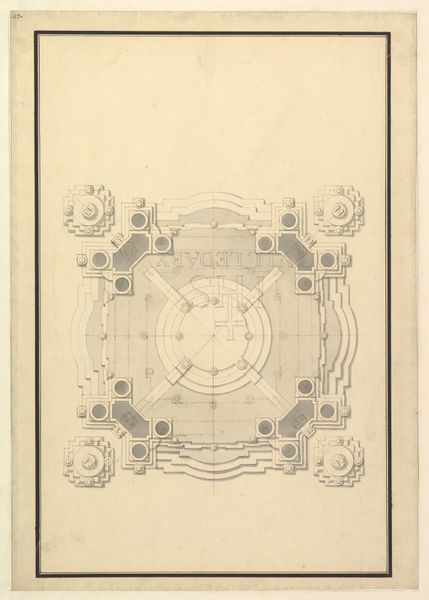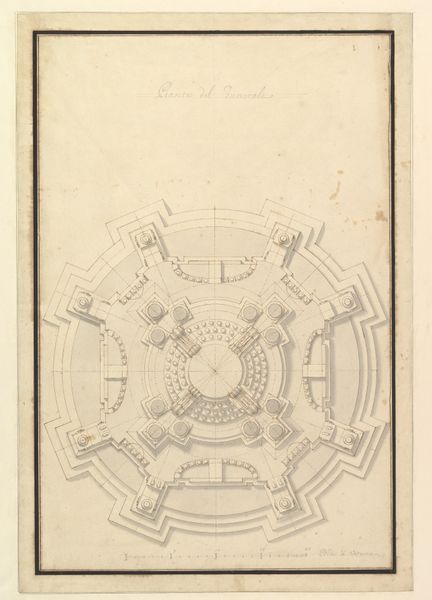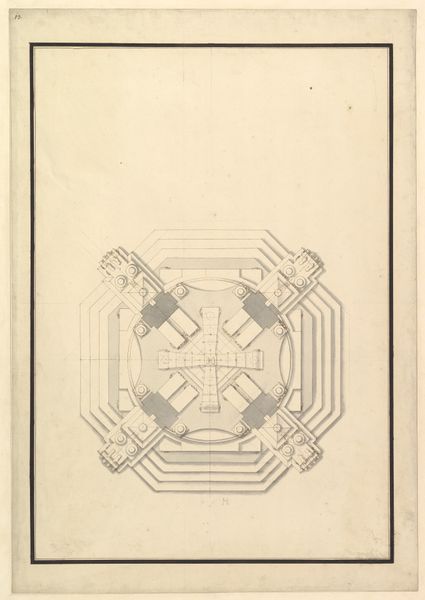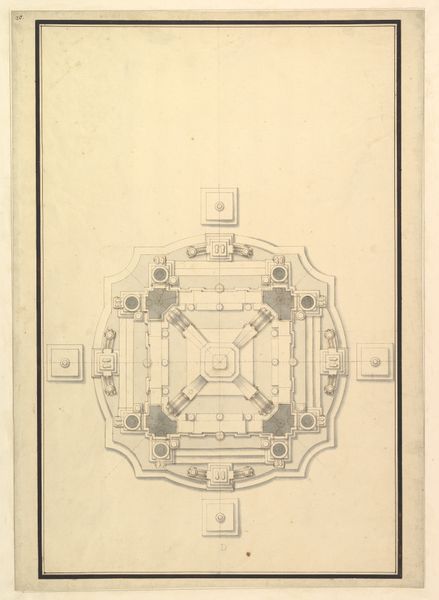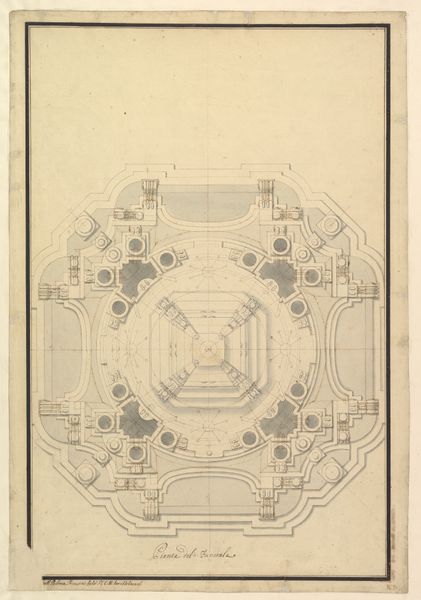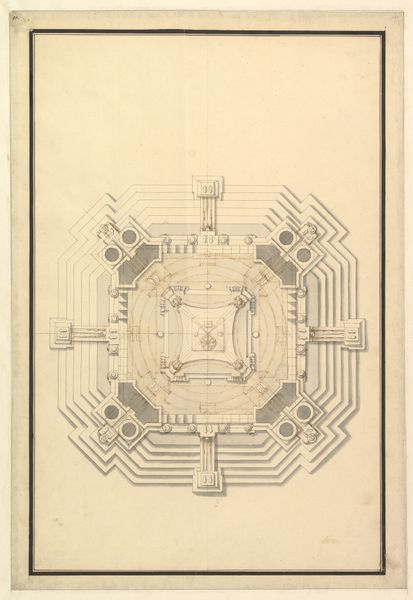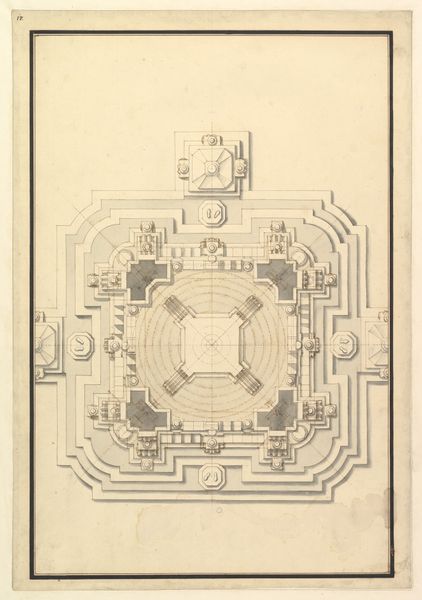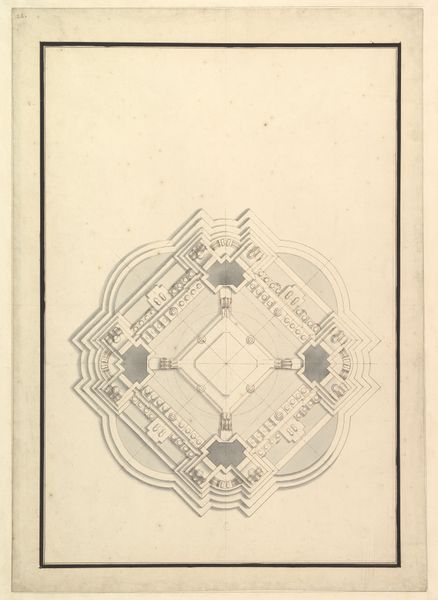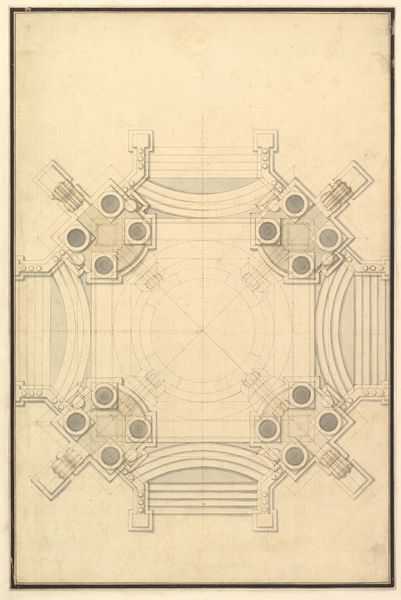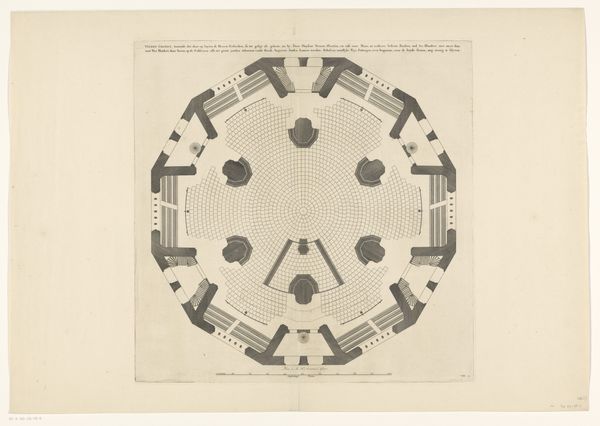
Ground Plan for a Catafalque for an electress of Bavaria 1696 - 1756
0:00
0:00
drawing, print, etching, architecture
#
drawing
#
medieval
# print
#
etching
#
etching
#
architecture
Copyright: Public Domain
Curator: This is Giuseppe Galli Bibiena's "Ground Plan for a Catafalque for an electress of Bavaria," created sometime between 1696 and 1756. It’s a drawing, or perhaps we could also consider it a print given it is rendered in etching. Editor: My first thought is, what a strangely beautiful dance between death and design! It is so geometric, almost mathematical in its precision, yet hinting at such an ephemeral spectacle. It makes me wonder what this reveals about death in that time. Curator: Indeed. The catafalque, you see, was a temporary, often elaborate structure erected to honor the deceased, particularly members of royalty or high-ranking officials. Bibiena and others like him, were theatre designers and stage architects, which brought incredible design sophistication into public expressions of grief and power. This was deeply ingrained in Baroque culture. Editor: Power is right. These displays, though somber in intent, feel like very potent assertions of political and social hierarchy. Who gets mourned like this, and who is forgotten? That spatial plan denotes carefully orchestrated layers of privilege, doesn't it? And is this the electress' preference, or perhaps, someone else’s vision of how her death should play out politically? Curator: It is most certainly a statement of power, yes, a public theater of mourning. The etches represent, potentially, marbled structures, sculptures and decorations – a spectacle, yes. Remember that during the Baroque era, the lines between art, theater, and politics were very blurred, so displays like these had considerable cultural weight. The families who ordered such presentations of grief gained credibility and the Church was perceived as more majestic, all through the artistry on display for everyone. Editor: And considering it is a ground plan, there’s also something unsettlingly strategic about mapping grief. It is not spontaneous sorrow; it's carefully constructed, contained and aimed, like propaganda through beauty. It asks who we center and validate even in passing, shaping communal memory. Curator: Exactly. These weren't merely funerals, but performances of state. Now in museums they remind us how closely aligned cultural aesthetics were with socio-political narratives of the period. Editor: It strikes me how looking at even these old, somewhat obscure artworks invites necessary dialogues about how institutions frame whose stories get remembered, and how we contend with history.
Comments
No comments
Be the first to comment and join the conversation on the ultimate creative platform.

